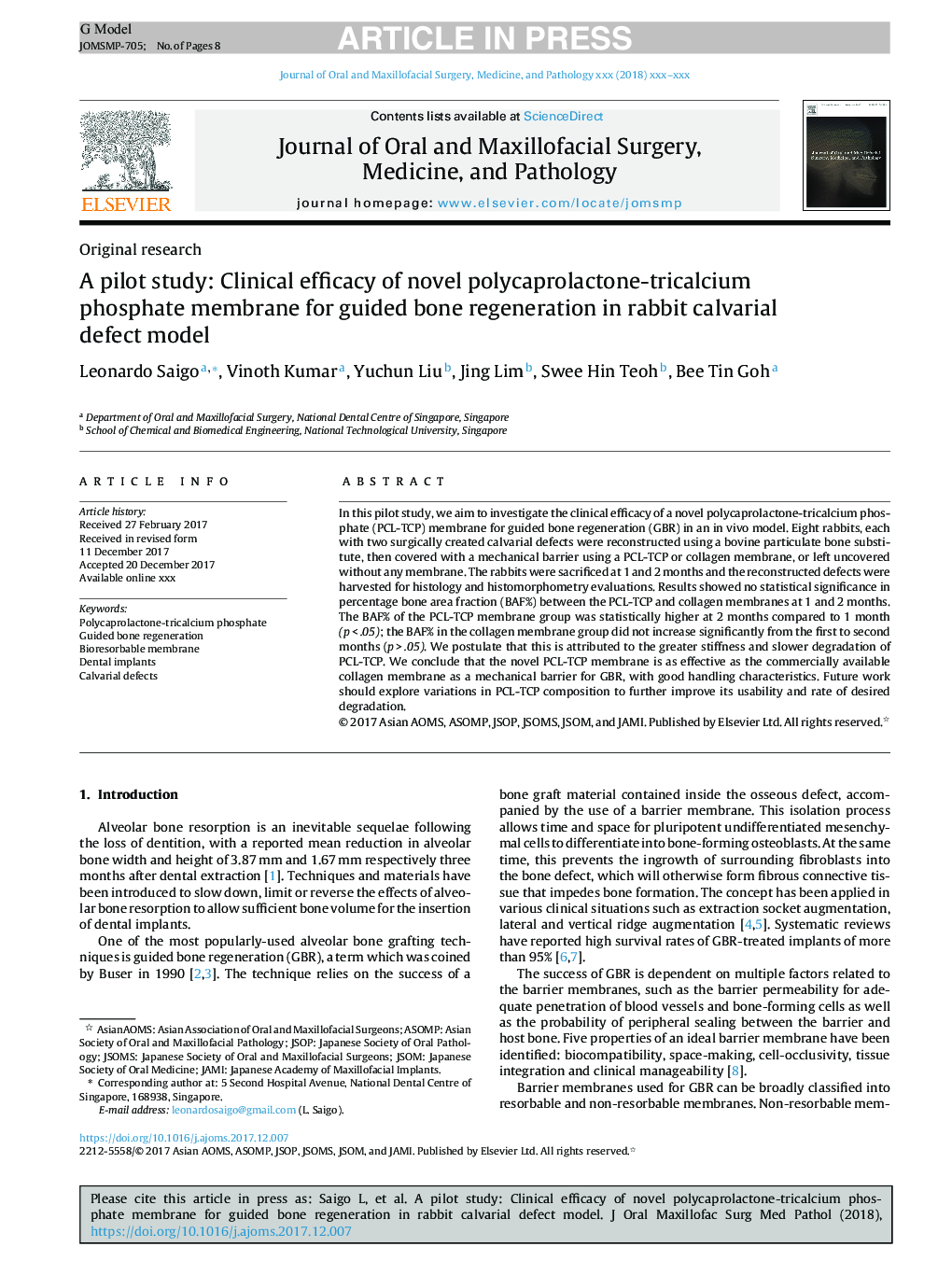| Article ID | Journal | Published Year | Pages | File Type |
|---|---|---|---|---|
| 8700572 | Journal of Oral and Maxillofacial Surgery, Medicine, and Pathology | 2018 | 8 Pages |
Abstract
In this pilot study, we aim to investigate the clinical efficacy of a novel polycaprolactone-tricalcium phosphate (PCL-TCP) membrane for guided bone regeneration (GBR) in an in vivo model. Eight rabbits, each with two surgically created calvarial defects were reconstructed using a bovine particulate bone substitute, then covered with a mechanical barrier using a PCL-TCP or collagen membrane, or left uncovered without any membrane. The rabbits were sacrificed at 1 and 2 months and the reconstructed defects were harvested for histology and histomorphometry evaluations. Results showed no statistical significance in percentage bone area fraction (BAF%) between the PCL-TCP and collagen membranes at 1 and 2 months. The BAF% of the PCL-TCP membrane group was statistically higher at 2 months compared to 1 month (p < .05); the BAF% in the collagen membrane group did not increase significantly from the first to second months (p > .05). We postulate that this is attributed to the greater stiffness and slower degradation of PCL-TCP. We conclude that the novel PCL-TCP membrane is as effective as the commercially available collagen membrane as a mechanical barrier for GBR, with good handling characteristics. Future work should explore variations in PCL-TCP composition to further improve its usability and rate of desired degradation.
Related Topics
Health Sciences
Medicine and Dentistry
Dentistry, Oral Surgery and Medicine
Authors
Leonardo Saigo, Vinoth Kumar, Yuchun Liu, Jing Lim, Swee Hin Teoh, Bee Tin Goh,
